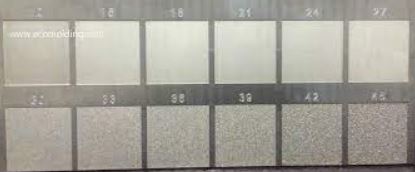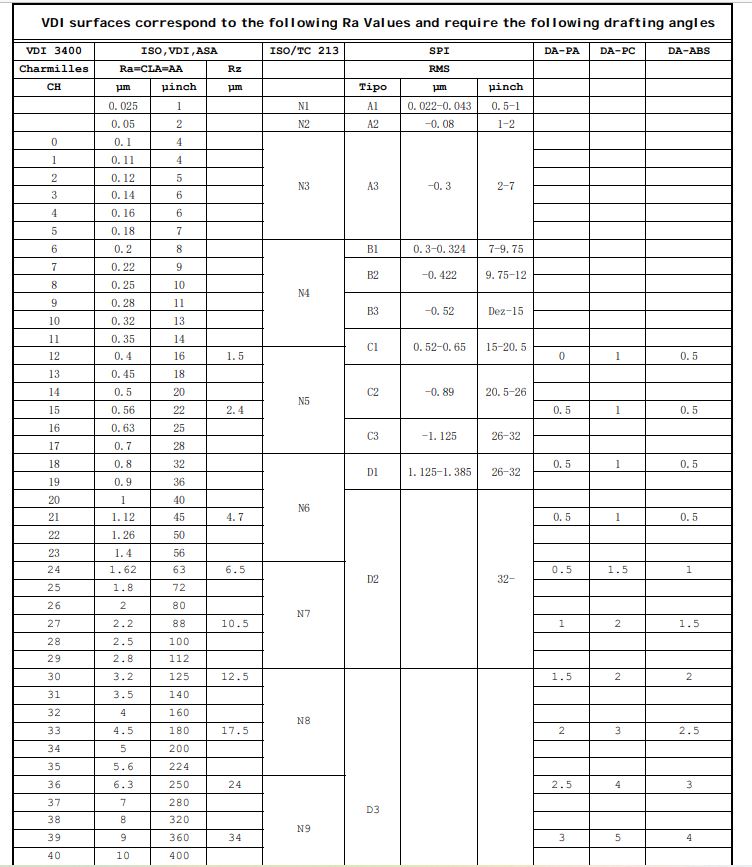Are you looking for different mold texturing surface finishs on a plastic part cavity side? Plastic parts not only benefit from designs that are pleasing to the eye, but they also benefit from the way a product feels when handled. Depending on the application, you may want your plastic mold part to be as smooth as glass or possess a rough feel to indicate strength and durability. One way to injection mold a molded part with a unique look with different grain on the part surface, which we call mold texture surface finish.

What is Mold Texturing surface finish?
Mold Texturing surface is a process used to apply patterns to the mold cavity surface. This process allows flexibility in creating the final appearance of your parts. Mould Texturing finish is an integral piece in overall product development and should be considered during the design process to achieve the desired results. Mold Texture can be a functional component of design as well. Some surface issue on molding part can be covered by the right texture. Is the part designed for frequent handling? Texture finish can be used to hide finger prints and improve the grip for the end user. Surface Texture can also be used to reduce part wear from friction.
Some important considerations to keep in mind when you plan to add texture surface finish on your plastic molded part
- Which surface do you need to add texture finish? normally texture finish will go to the outside surface
- what plastics will use for your plastic molding part? Thermosets, Ryanite, Glass Filled Nylon, Glass Filled Polypropylene, ABS, Polycarbonate, etc. different plastics material will usually require different draft for same texture finish.
- What grade /type of texture finish do you need? on the market the most use of surfaces are VDI 3400 texture, leather texture, wood texture, etc., each type of texture has different grade of texture finish as well, for example VDI 3400 texture finished that has grade texture finish from VDI 12 to VDI 45, different grade of VDI texture requires different of draft angle.
In order to facilitate the removal of the finished product, there must be an appropriate draft angle in the ejection direction of the finished product; for finished products that do not bite, it is recommended to have at least 1°, and of course the larger the better.
For finished products with bite marks, depending on the type and depth of the bite marks, the angle should be at least 3~5° if possible.
VDI 3400 is Electric Discharge Pattern (EDM)
For VDI 3400, please refer to the table below: (Generally, it is better to add 1° to the angle)
Below is VDI3400 plastic surface finish chart
| VDI3400 | Average depth Ra(μm) | Maximum depth μm | PC(Draft angle) | ABS(Draft angle) | PC/ABS(Draft angle) |
| 12 | 0.40 | 1.50 | 1.00 | 0.50 | 1.00 |
| 15 | 0.56 | 2.40 | 1.00 | 0.50 | 1.00 |
| 18 | 0.80 | 3.30 | 1.00 | 0.50 | 1.00 |
| 21 | 1.12 | 4.70 | 1.00 | 0.50 | 1.00 |
| 24 | 1.60 | 6.50 | 1.50 | 1.00 | 1.50 |
| 27 | 2.24 | 10.50 | 2.00 | 1.50 | 2.00 |
| 30 | 3.15 | 12.50 | 2.00 | 2.00 | 2.00 |
| 33 | 4.50 | 17.50 | 3.00 | 2.50 | 3.00 |
| 36 | 6.30 | 24.00 | 4.00 | 3.00 | 4.00 |
| 39 | 9.00 | 34.00 | 5.00 | 4.00 | 5.00 |
| 42 | 12.50 | 48.00 | 6.00 | 5.00 | 6.00 |
| 45 | 18.00 | 69.00 | 7.00 | 6.00 | 7.00 |
by above explaining about plastic molding texture surface finish I assume you may little confused, but no worries, we are professional on all of the mold texture surface finish jobs, you only need to send us your part design and we will handle all of questions for you.


